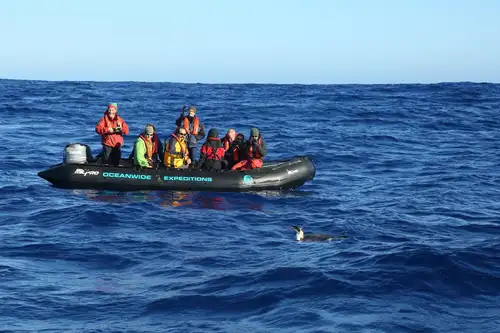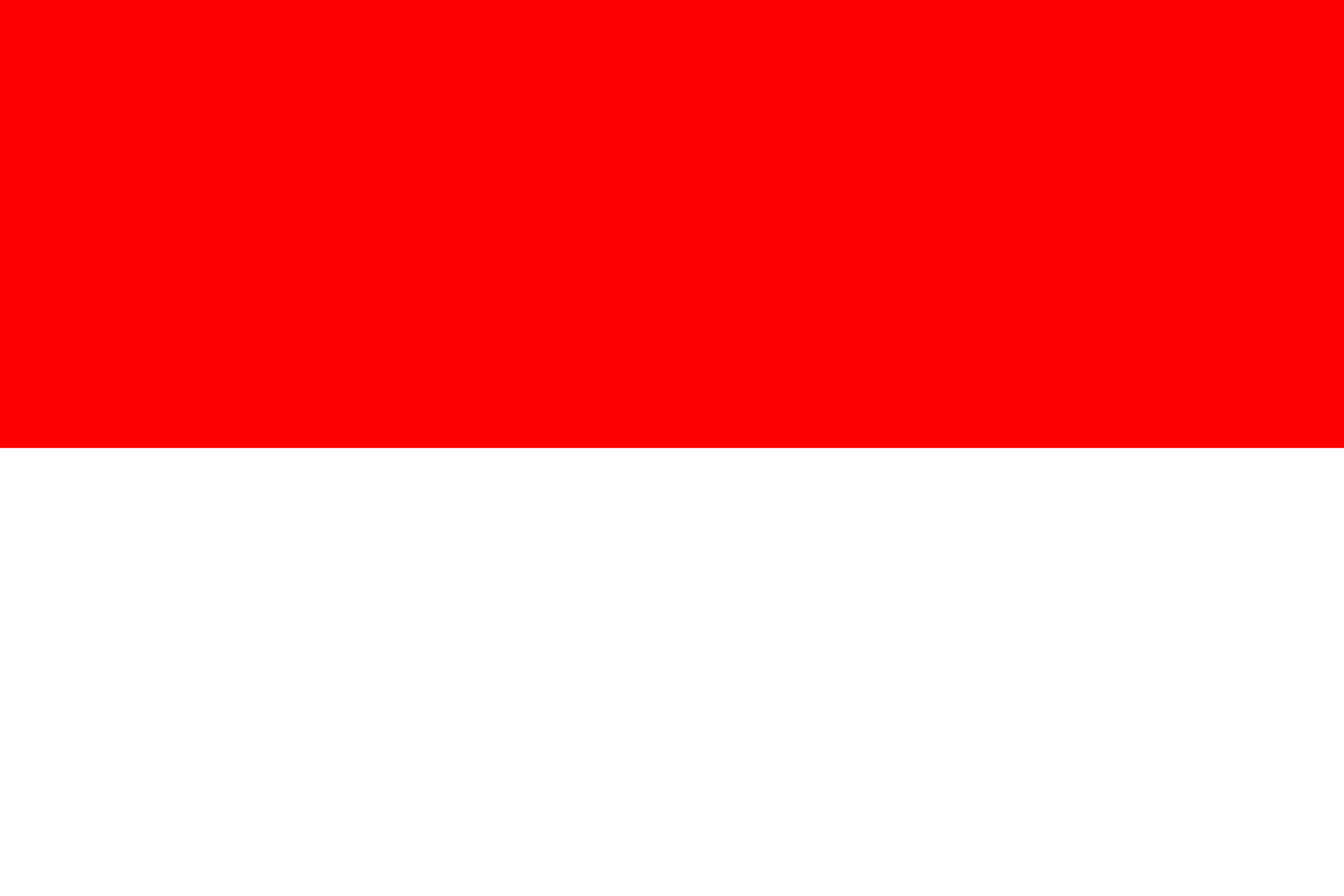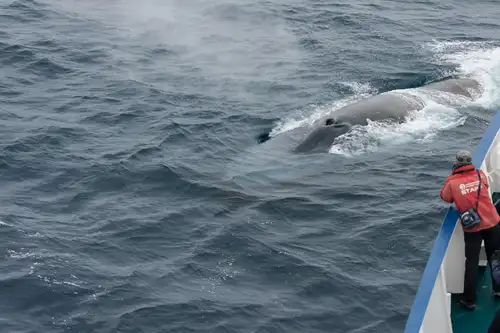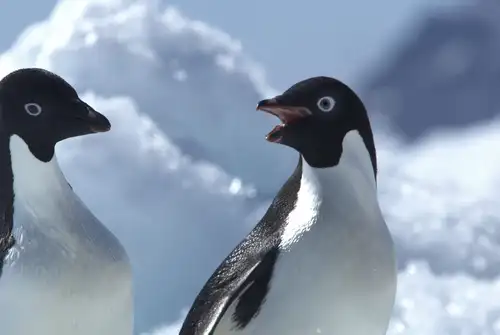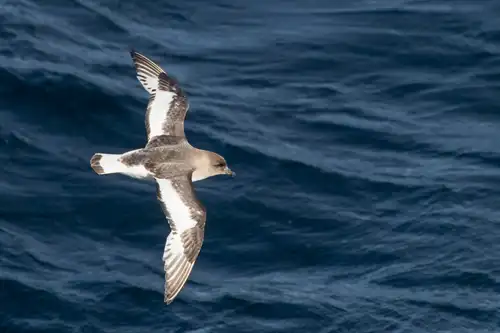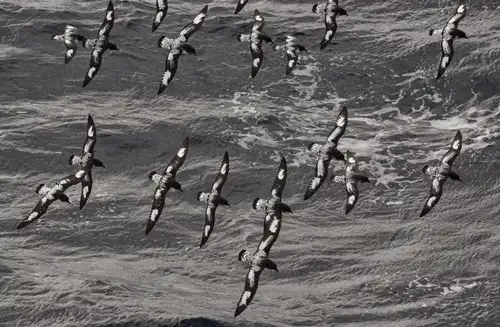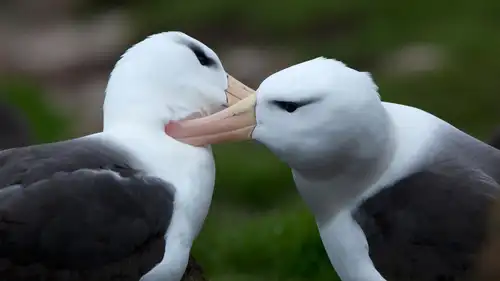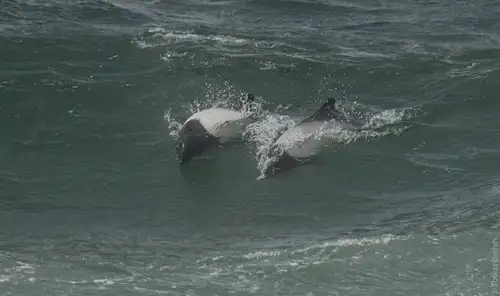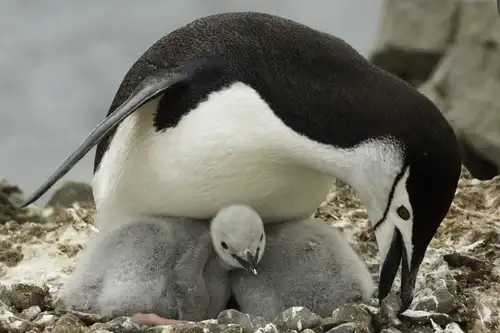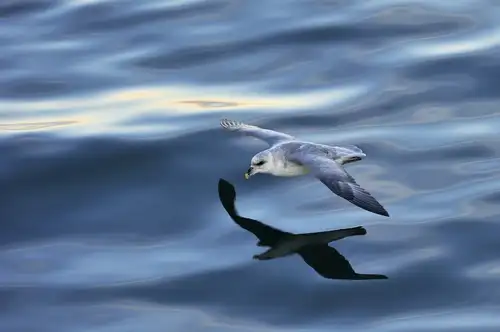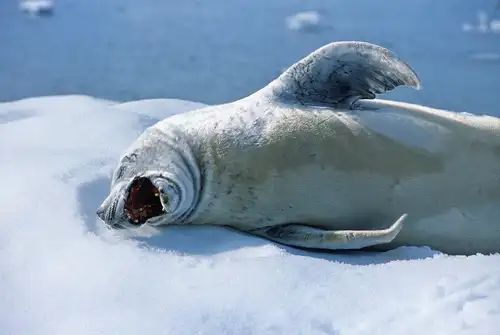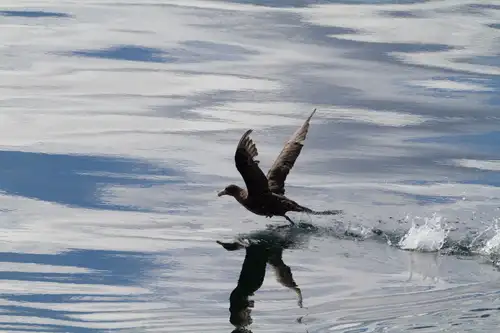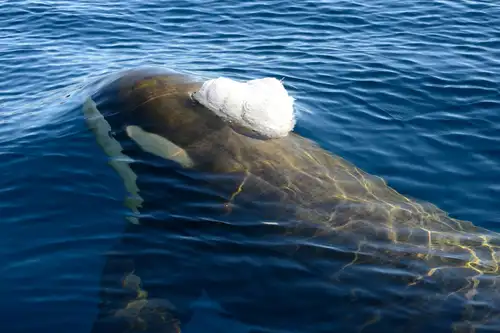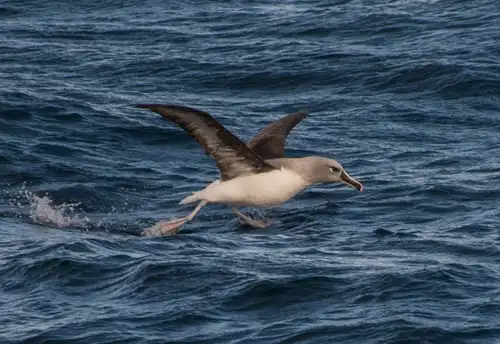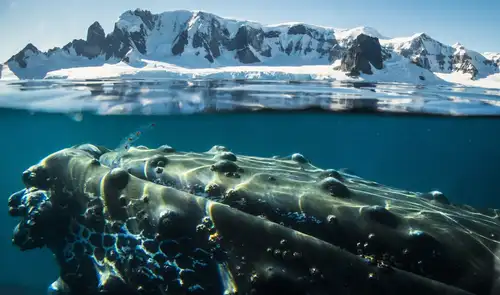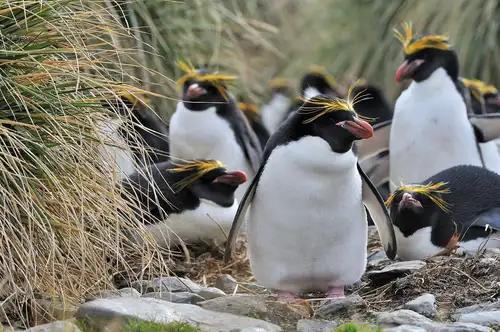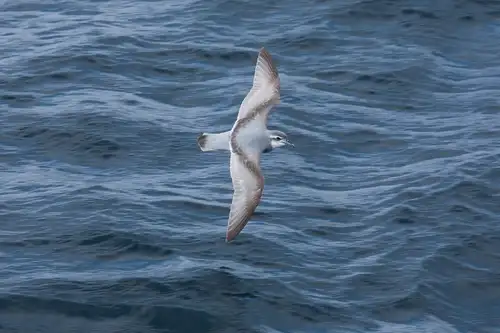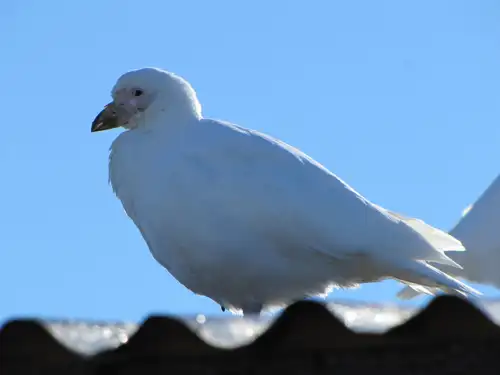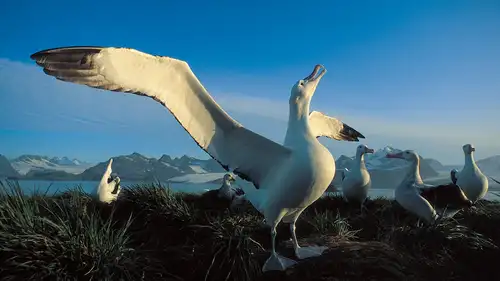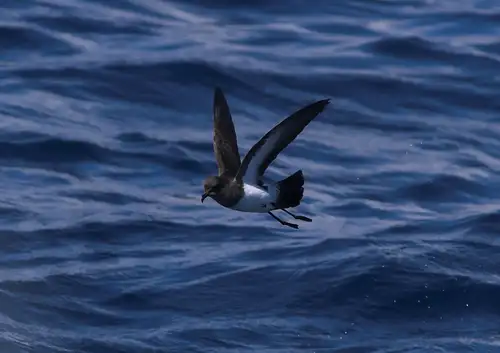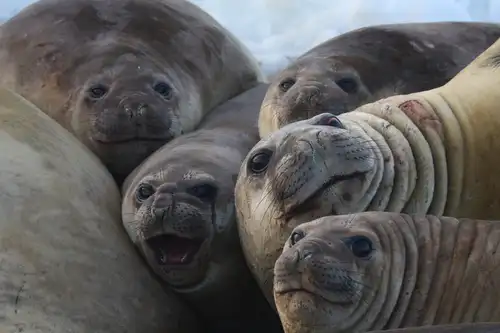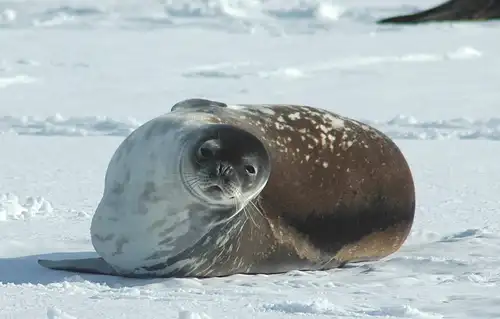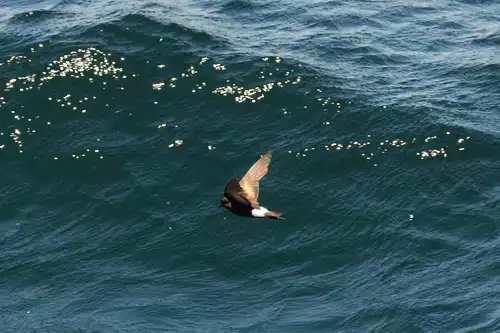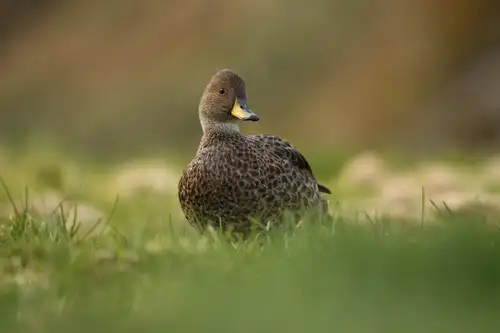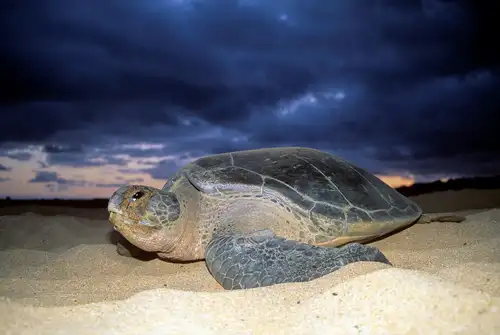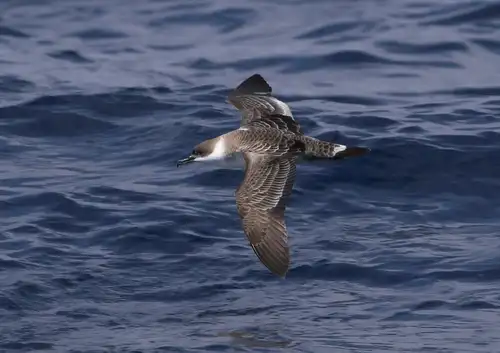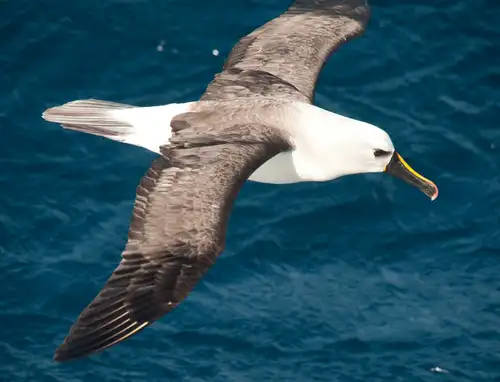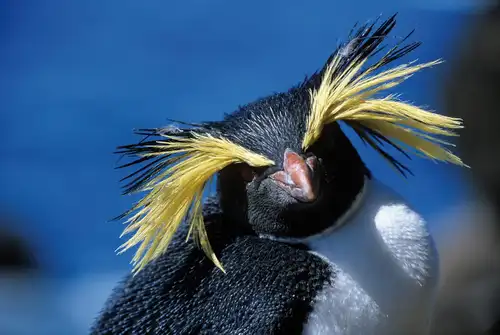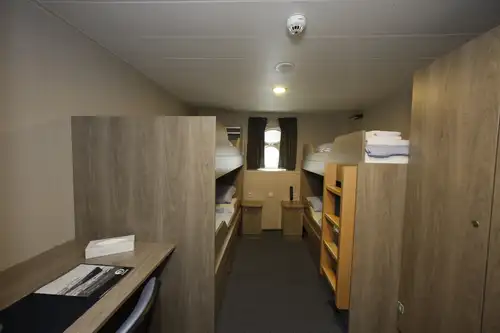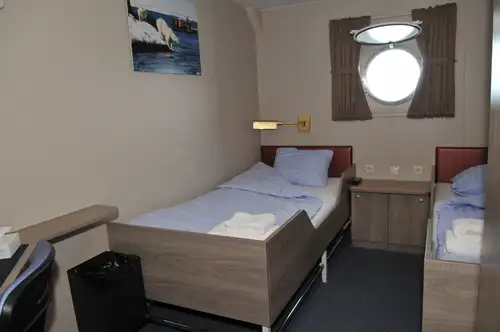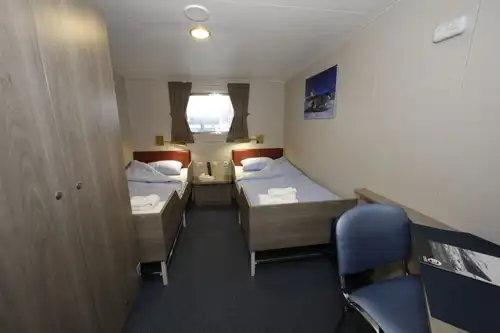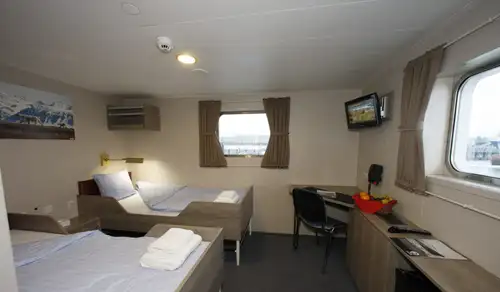 33 Days/32 Nights
33 Days/32 Nights




End of the world, start of a journey
Your expedition begins where the world drops off. Ushuaia, Argentina, known as the southernmost city on the planet, is located on the far southern tip of South America. Starting in the afternoon, you set off from this small resort town on Tierra del Fuego, nicknamed "The End of the World," and cruise the mountain-fringed Beagle Channel for the rest of the evening.
Path of the polar explorers
Over the next two days on the Drake Passage, you experience some of the same things encountered by the great polar explorers who first charted these regions: cool salt breezes, rolling seas, maybe even a fin whale spouting up sea spray. After passing the Antarctic Convergence – Antarctica’s natural boundary, formed when north-flowing cold waters collide with warmer sub-Antarctic seas – you are in the circum-Antarctic upwelling zone. Not only does the marine life change, the bird life changes too. Wandering albatrosses, grey-headed albatrosses, black-browed albatrosses, light-mantled sooty albatrosses, cape pigeons, southern fulmars, Wilson’s storm petrels, blue petrels, and Antarctic petrels are a few of the birds you might see.
Entering Antarctica
Gray stone peaks sketched with snow, towers of broken blue-white ice, and dramatically different wildlife below and above. You first pass the snow-capped Melchior Islands and Schollaert Channel, sailing between Brabant and Anvers Islands.
- Danco Island – Activities here may focus on the gentoo penguins nesting on the island, in addition to the Weddell and crabeater seals that can be found nearby.
- Neko Harbour – An epic landscape of mammoth glaciers and endless wind-carved snow, Neko Harbour offers opportunities for a Zodiac cruise and landing that afford the closest views of the surrounding alpine peaks.
- Paradise Bay – You may be able to take a Zodiac cruise in these sprawling, ice-flecked waters, where there’s a good chance you’ll encounter humpback and minke whales.
- Pléneau & Petermann Islands – If the ice allows it, you could sail through the Lemaire Channel in search of Adélie penguins and blue-eyed shags. There is also a possibility you’ll encounter humpback and minke whales here, as well as leopard seals.
- Port Lockroy – After sailing through the Neumayer Channel, you may get a chance to visit the former British research station – now a museum and post office – of Port Lockroy on Goudier Island. You may also be able to partake in activities around Jougla Point, meeting gentoo penguins and blue-eyed shags.
- At the nearby sites, such as Damoy Point, there may be the opportunity for snowshoeing to the old ski-way, this is also one of our favourite camping sites.
- Wilhelmina Bay & Guvernøren – This is a great place to spot humpback whales. You also may embark on a Zodiac cruise ending at the ghostly wreck of the Guvernøren, a whaling vessel that caught fire here in 1915. Around the Melchior Islands, amid a frozen landscape peopled with icebergs, you may encounter even more whales, leopard seals, and crabeater seals.
Conditions on the Drake Passage determine the exact time of departure.
Familiar seas, familiar friends
Your return journey is far from lonely. While crossing the Drake, you’re again greeted by the vast array of seabirds remembered from the passage south. But they seem a little more familiar to you now, and you to them.
There and back again
Every adventure, no matter how grand, must eventually come to an end. It’s now time to disembark in Ushuaia, but with memories that will accompany you wherever your next adventure lies.
End of the world, start of a journey
Your expedition begins where the world drops off: Ushuaia, Argentina, said to be the southernmost city on the planet, located on the far southern tip of South America. Starting in the afternoon, we set off from this small resort town on Tierra del Fuego (nicknamed "The End of the World") and cruise the mountainous Beagle Channel for the rest of the evening.
Sea route to South Georgia
Today we are en route to South Georgia. After passing the Antarctic Convergence, which is a natural boundary formed when north-flowing cold waters collide with warmer sub-Antarctic waters, we enter the circum-Antarctic upwelling zone. Not only does the marine life change, the bird life changes, too: A variety of albatrosses and petrels show up, along with Cape pigeons and southern fulmars.
South Georgia sights
Our aim today is to visit some of the world’s top king penguin rookeries. This time of year you have a good chance of seeing these animals nesting on eggs, with their chicks nearby. The rookeries are sometimes overflowing, with penguins traveling to and from the beach.
- Salisbury Plain, St. Andrews Bay, Gold Harbour – Here you can see not only the massive king penguin colony, but also elephant seals and limitless fur seal pups playing in the surf.
- Grytviken – We also have the opportunity to check out this abandoned whaling station, where king penguins walk the streets and elephant seals lie around like they own the place – because they basically do! You might also see the South Georgia Museum as well as Shackleton’s grave here.
- Cooper Bay – This is a fine place for a Zodiac cruise, and this bay also houses a rookery of macaroni penguins. King penguins, pintails, and giant petrels may also appear here.
- Moltke Harbour – Located in Royal Bay, this scenic spot gives you the chance to see the huge king penguin colony that lives here.
Once more to the sea
A pleasant tailwind often accompanies the vessel through the westerlies, and on both sides of the Antarctic Convergence, you might see large numbers of Antarctic and sub-Antarctic seabirds.
The quest continues at the great Gough Island
Today we plan to approach Gough Island for a Zodiac cruise in Quest Bay, if the weather permits. Here you might see northern rockhopper penguins and sub-Antarctic fur seals. In previous years, it has been possible for us to circumnavigate most of Gough Island’s 33-mile circumference, taking in this area’s splendid scenery and abundant wildlife.
Tristan da Cunha and all the pretty birds
The remote islands of Tristan da Cunha are famed for their plentiful bird populations, which include rockhopper penguins, several species of albatross, petrels, skuas, terns, and many others. Our goal during this stage of our expedition is to visit the small settlement on the west side of the main island, but we might also land at Seal Bay on the south side of Tristan da Cunha or at Sandy Point on the east side.
In these stunning locations, you could encounter such exotic wildlife as yellow-nosed albatrosses and sub-Antarctic fur seals, all while exploring a rarely visited spot. We also intend to land at Nightingale Island and Inaccessible Island, both of which offer great views of beautiful seabirds ranging from yellow-nosed albatrosses to brown noddies.
Two days are reserved at Tristan da Cunha in case of bad weather, but please remember that nature determines our itineraries here: Since beginning the Atlantic Odyssey cruise in 1998, adverse weather led to the cancellation of 35% of Tristan da Cunha landings. If we have to divert for safety reasons, we will find good alternatives.
Subtropical seas and seabirds
Seabirds and dolphins indigenous to this region often follow the vessel.
Highlights of Saint Helena
After we land at Jamestown on Saint Helena Island, you will have the opportunity to enjoy the area’s local culture, pleasant climate, and endemic bird life. You can pay a visit to Longwood House, where Napoleon died in exile; walk the 699-step Jacob’s Ladder, if you’re feeling ambitious; or snorkel the shallows offshore, seeing multitudes of tropical and subtropical fish.
Please note: You have the option to disembark and fly home from Jamestown, if flights are available. In the evening, we will depart for Ascension Island and Praia, Cape Verde, where you can also disembark. Make sure to book voyage HDS32-25 if you want to fly out from Praia.










































































- Flights to the embarkation point and from the disembarkation point.
- Pre- and post- land arrangements.
- Passport and visa expenses.
- Meals ashore.
- Personal health Insurance for Medical, Accident and Repatriation/Evacuating.
- All personal expenses, including but not limited to laundry services, bar beverages, and excess internet usage charges.
- The customary gratuity at the end of the voyages for stewards and other service personnel aboard (guidelines will be provided).
- Voyage aboard the indicated vessel
- All meals throughout the voyage aboard the ship including snacks, coffee and tea.
- All shore excursions and activities throughout the voyage by Zodiac.
- Program of lectures by noted naturalists and leadership by experienced expedition staff.
- Free use of rubber boots and snowshoes.
- Pre-scheduled group transfer from the vessel to the airport in Ushuaia (directly after disembarkation).
- All miscellaneous service taxes and port charges throughout the programme.
- Comprehensive pre-departure material.
- Children under the age of 18 are not allowed to stay in a cabin without parental or adult supervision.
- An ice-strengthened ship is a ship made of steel. These ships are made to get through the ice at Antarctica and the Arctic. Nowadays, most of the ships that cruise to Antarctica and the Arctic are ice-strengthened ships. Ortelius and Plancius are both are ice-strengthened ships. Ortelius has the highest ice-class notation (UL1 equivalent to 1A) and is therefore very suitable to navigate in solid one-year sea ice and loose multi-year pack ice. Plancius has an ice-class notation of 1D. Icebreakers are needed if there is a trade route to keep ice free, if there are military reasons for patrolling in areas with heavy sea ice or if you need to work in heavy ice conditions, particularly in winter. Icebreakers are expensive to build and very expensive in fuel to run (sometimes powered by gas turbines or a nuclear generator). They are uncomfortable to travel in on the open sea.
- The currency used on all vessels is the Euro, but you can also pay with USD.
- We accept payment via bank transfer, Wise or credit card (Mastercard and Visa). When paying with a credit card, we have to pass on a credit card fee.
- Many people take a cruise to South Georgia specifically with wildlife in mind, and for good reason. The area has rich and diverse bird life, not only for its huge king penguin colonies. Other birds that you may see when you travel to South Georgia include albatrosses, terns, and several species of petrels. Additionally, you may encounter marine life that ranges from whales to a great number of seals, such as Antarctic fur seals and southern elephant seals. South Georgia has the highest concentration of marine life on the planet.
- South Georgia has no resident population. Throughout the year, the research station and governmental facilities are staffed from GSGSS and BAS. In the summer season, the numbers increase with staff from SGHT as well as science and government projects. The winter population is generally about eight people, and in the summer around 40.
- There is place for 116 passengers aboard the Plancius. Furthermore there are 45 staff & crew on board : 17 nautical crew, 19 hotel staff (6 chefs, 1 hotel manager, 1 steward-barman and 11 stewards/cabin cleaners), 7 or 8 expedition staff and 1 doctor on board.
- There are in total 50 cabins at the Plancius: 4 quadruple cabins with private toilet and shower 9 twin porthole cabins 25 twin cabins with window 2 twin deluxe cabins (ca 15 square meters) 10 superior cabins (ca 21 square meters)
You May Also Like


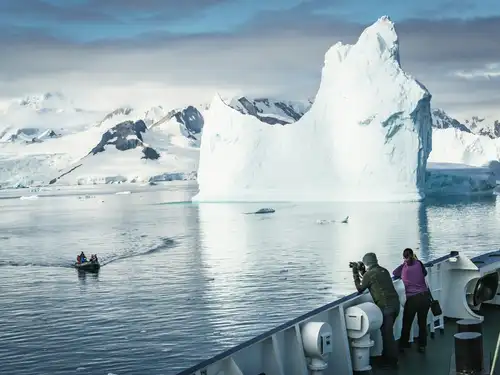
Falklands, South Georgia and Antarctica - Photographic Special
 21 Days / 20 Nights
21 Days / 20 Nights
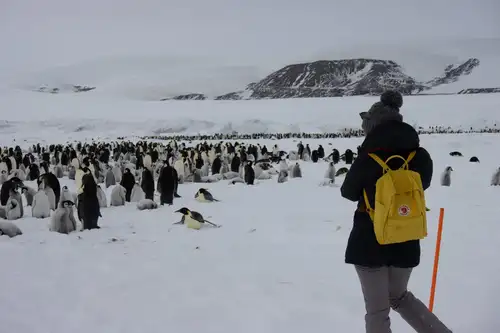
Weddell Sea – In search of the Emperor Penguin, incl. helicopters
 11 Days / 10 Nights
11 Days / 10 Nights

South Georgia Explorer
 15 Days / 14 Nights
15 Days / 14 Nights

Antarctica - Discovery and learning voyage
 11 Days / 10 Nights
11 Days / 10 Nights

Falkland Islands - South Georgia - Antarctica
 20 Days / 19 Nights
20 Days / 19 Nights

Antarctica - Basecamp - free camping, kayaking, snowshoe/hiking, mountaineering, photo workshop
 13 Days / 12 Nights
13 Days / 12 Nights

Remote Weddell Sea Explorer incl. South Georgia - South Sandwich Islands - Neuschwabenland - Larsen Ice Shelf - Paulet and Devil Island - Elephant Island, incl. helicopters
 28 Days / 27 Nights
28 Days / 27 Nights

Falkland Islands - South Georgia - Elephant Island - Antarctica - Polar Circle
 23 Days / 22 Nights
23 Days / 22 Nights
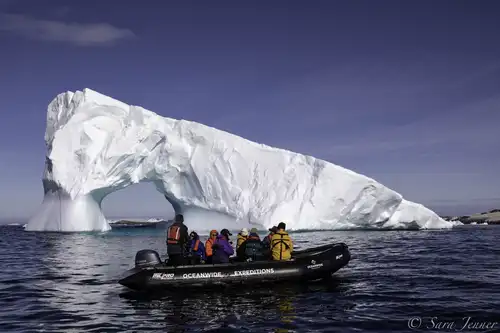
Antarctica - Elephant Island - Weddell Sea - Polar Circle - Aurora Australis / Southern Lights
 15 Days / 14 Nights
15 Days / 14 Nights

Antarctica - Whale watching discovery and learning voyage - Aurora Australis / Southern Lights
 11 Days / 10 Nights
11 Days / 10 Nights

Antarctica - Beyond the Polar Circle - whale watching - Aurora Australis / Southern Lights
 12 Days / 11 Nights
12 Days / 11 Nights

Antarctica - Whale watching
 10 Days / 9 Nights
10 Days / 9 Nights

Atlantic Odyssey incl. Antarctic Peninsula to St. Helena
 33 Days / 32 Nights
33 Days / 32 Nights
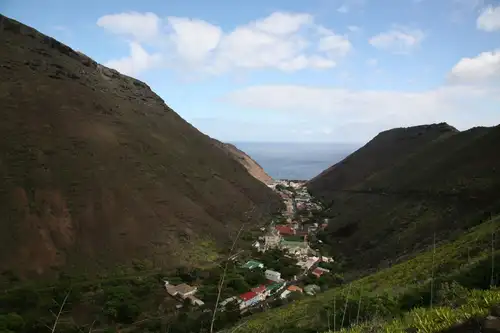
Atlantic Odyssey incl. Antarctic Peninsula to Cape Verde
 43 Days / 42 Nights
43 Days / 42 Nights

Atlantic Odyssey, excl. Antarctic Peninsula
 24 Days / 23 Nights
24 Days / 23 Nights

Atlantic Odyssey excl. Antarctic Peninsula to Cape Verde
 34 Days / 33 Nights
34 Days / 33 Nights

St. Helena to Cape Verde
 11 Days / 10 Nights
11 Days / 10 Nights

Falkland Islands - South Georgia - Antarctic Peninsula - Photography special
 21 Days / 20 Nights
21 Days / 20 Nights

Falkland Islands - South Georgia - Antarctic Peninsula
 21 Days / 20 Nights
21 Days / 20 Nights

Falkland Islands - South Georgia - Antarctic Peninsula - Birding
 19 Days / 18 Nights
19 Days / 18 Nights

Antarctica - Discovery and learning + Long hikes
 11 Days / 10 Nights
11 Days / 10 Nights

Bellingshausen Sea / Peter I Island + Ellsworth Land - incl. helicopters
 25 Days / 24 Nights
25 Days / 24 Nights

Antarctic Peninsula - Weddell Sea + Activity: Long Hikes
 11 Days / 10 Nights
11 Days / 10 Nights

Remote Weddell Sea Explorer - incl. helicopters
 28 Days / 27 Nights
28 Days / 27 Nights

Antarctica - Polar Circle - Deep South Discovery voyage - Aurora Australis / Southern Lights
 13 Days / 12 Nights
13 Days / 12 Nights
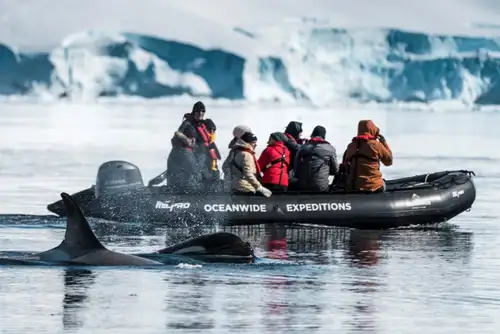
Antarctica - Whale watching discovery and learning voyage
 11 Days / 10 Nights
11 Days / 10 Nights

Antarctica - Elephant Island - Weddell Sea - Polar Circle
 15 Days / 14 Nights
15 Days / 14 Nights
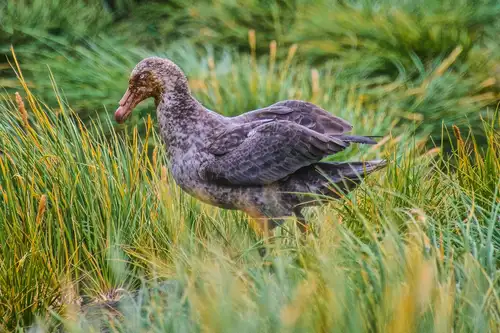
The Giant Petrels of King George Island
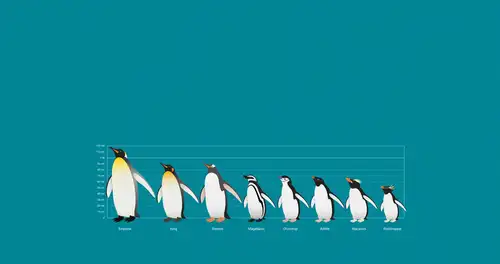
The Eight Great Penguin Species of Antarctica

The Research Stations of Antarctica and the sub-Antarctic
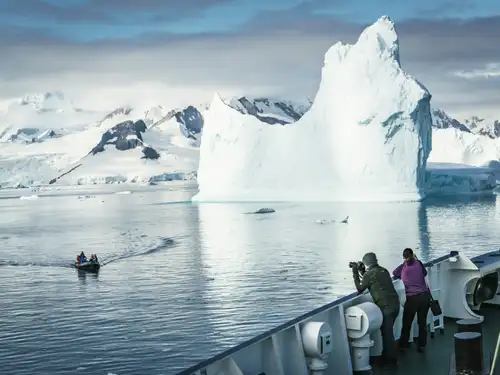
The Classic Polar Cruise: Antarctic Peninsula Facts, Pics, and More

Antarctic Explorer’s Voyage
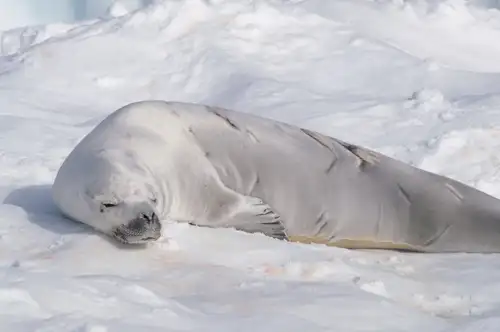
Six Facts About the Crabeater Seals of Antarctica
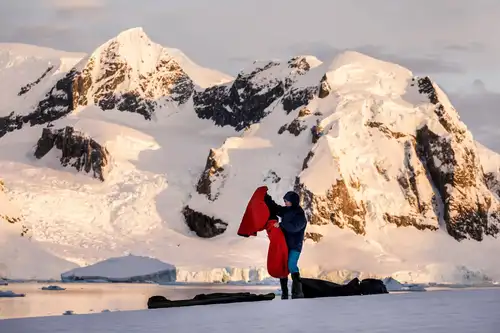
Camping in Antarctica: a True Expedition Experience

Top Antarctica Cruise Experiences for 2025
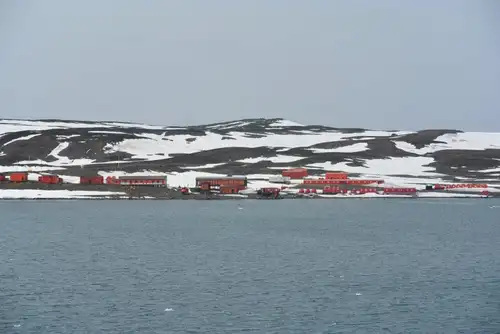
Living the Antarctic Dream
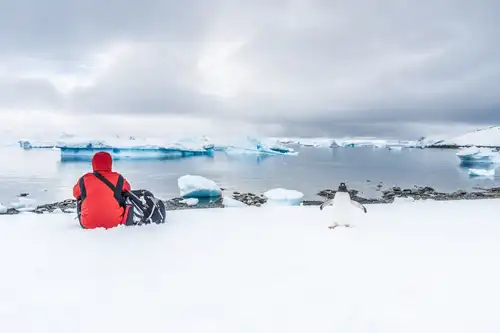
Adding Antarctica to Your Seven-Continents Bucket List
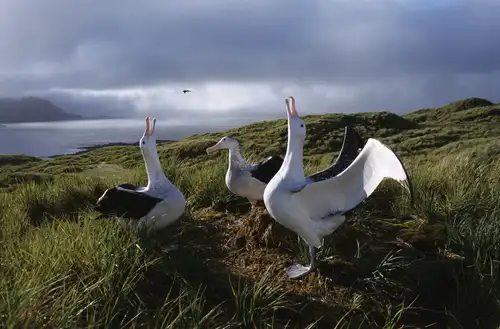
Albatross, penguin and krill research in Antarctica

Arctic and Antarctic Basecamp Cruises – Choose Your Own Adventure
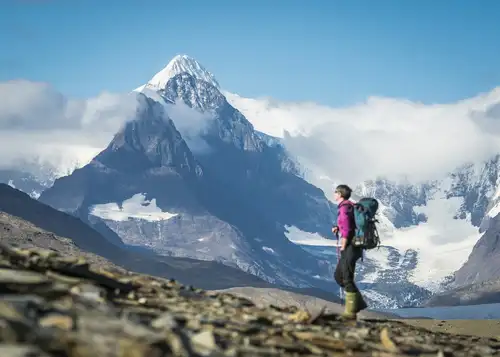
15 Fantastic Photos of Antarctica

The Ins, Outs, and Ups of Polar Mountaineering & Ski Mountaineering

A Day of Whale Watching in Antarctica

Eight Antarctic Misconceptions
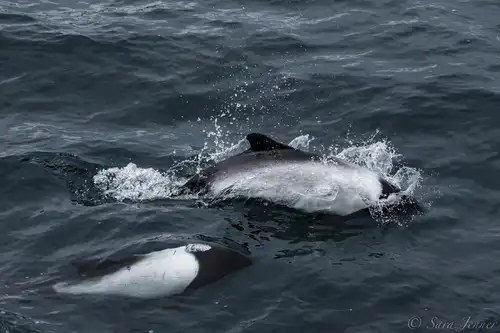
The Small but Social Commerson’s Dolphin
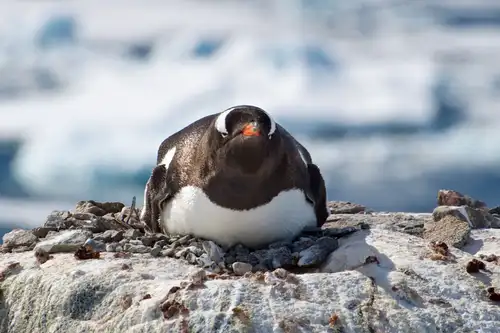
Life in a Penguin Colony
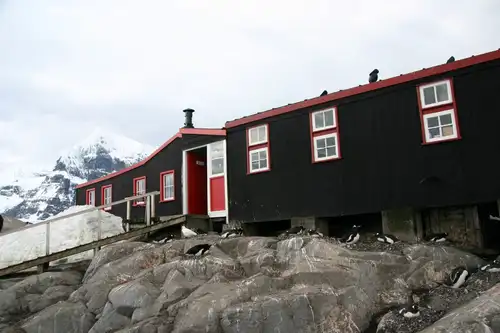
Port Lockroy: History, Post Office, and Resident Penguins
